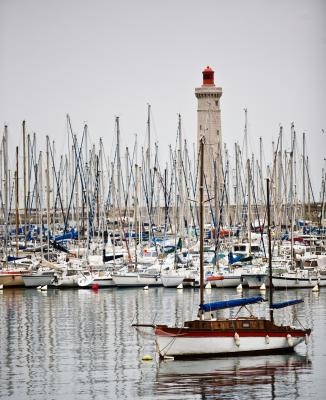
Converting a gasoline or diesel auto engine to marine use requires mechanical expertise and knowledge of marine applications associated with engine performance and use. Unlike auto engines that receive fresh air to assist cooling, marine engines are covered or installed below deck. Auto engines are designed for running at a range of speeds, whereas marine engines perform at half-throttle or full speed most of the time. Accessories and components are available through marine suppliers or aftermarket sources. Basic conversions are performed with the auto engine mounted on a stand.
Remove the exhaust headers from the auto engine. Detach and remove the carburetor. Remove the water pump and pulley from the engine. Pop the lead freeze plugs out at the base of the engine block. Remove the motor mounts from the block.
Install marine exhaust manifold gaskets and mount the water-cooled exhaust manifolds and heat exchangers. Attach the marine water pump (raw water pump) at the front of the engine. Connect the heat-exchanger hoses to the water pump. Install a through-hull raw water intake, water filter and remaining water hoses in the engine compartment of the boat.
Attach the exhaust tubes to the water-cooled exhaust manifolds. Include the necessary gaskets and clamps. The remaining components of the exhaust are connected once the engine is installed.
Remove the fuel line fittings from the carburetor. Attach marine fittings for rigid lines or aircraft-rated fuel lines that are configured for the particular boat, gas tank and accessory fuel pump once the engine is installed. Plan on including one or more fuel filters in the fuel supply system.
Retrofit the intake manifold with tilt shims for the carburetor. Shims ensure that the carburetor remains level when the bow of the boat rises, such as when getting underway.
Install carburetor flame arrestors into the intake manifold. Reattach the carburetor to the intake manifold. Retrofit the throttle linkage to adapt to the boat's throttle control and throttle cables.
Install brass freeze plugs in the engine block. Attach marine motor mounts to the engine block. Fill the engine's crankcase with marine-grade motor oil. Install an external oil filter in the engine compartment.